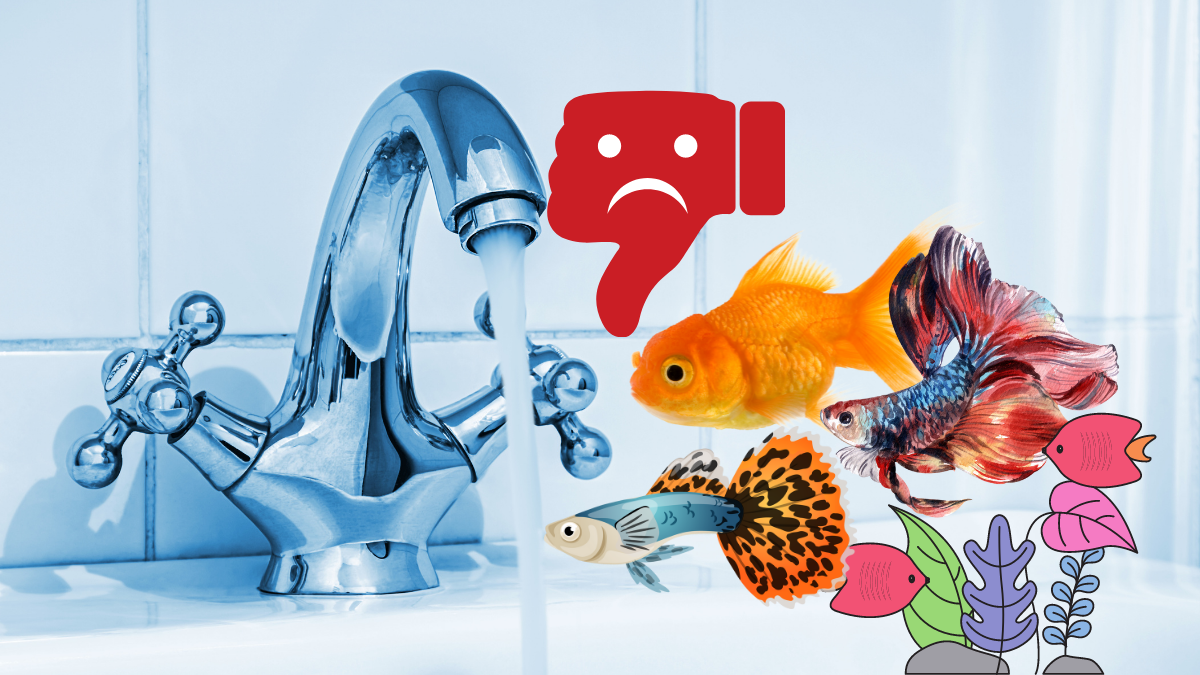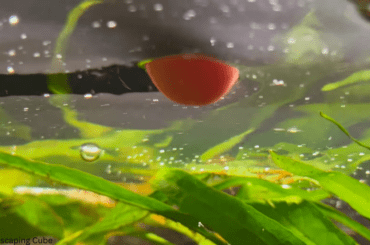Do the fish in your newly set up fish tank gasp for air? Do your fish die even though your aquarium is properly cycled? If the Nitrate and Nitrite levels are fine, it might be Chlorine Poisoning from your tap water.
Whether you’re setting up a simple fish tank for your kids or starting yourself out in the Hobby, this will help you to keep your fish healthy and happy. So keep reading to learn the symptoms, How to avoid and How to treat Chlorine Poisoning of aquarium fish.
Can you use tap water in a fish tank?
Yes, you can use tap water in your home aquarium. But you can never use tap water directly for your aquarium.
Keeping an aquarium requires regular access to water and tap water is the obvious and affordable choice for most of us. It’s reliable, clean, and easily accessible. So you have to test and properly condition the tap water before adding fish.
Why can’t Aquarium Fish live in tap water?
We know that tap water is generally safe for human consumption without any problem. Because of this, many newcomers to the aquarium hobby simply assumed that water straight from the tap is also safe for their fish. But really it’s not good.
Tap water typically contains certain chemicals, namely Chlorine and Chloramine that eliminate waterborne bacteria that can make us sick. The controlled doses of these chemicals in our water pose no threat to humans. But they are potentially dangerous for your fish.
Exposure to smaller amounts of chlorine and chloramine can damage their delicate gills and skin surfaces, while larger amounts of exposure can straight-up kill them by suffocation.
How do I test the Chlorine level in fish tank water?
Normally Chlorine or Chloramines are used in an estimated 25% – 30% of US households according to EPA standards, even higher in densely populated areas where most households are on a municipal water supply.
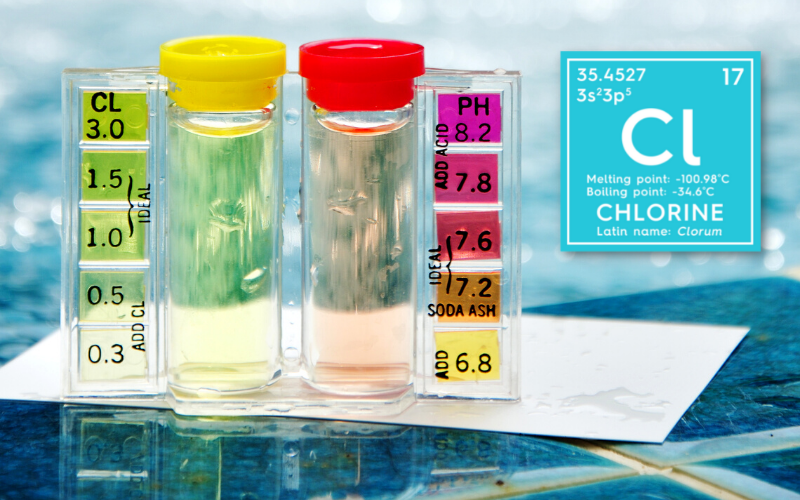
The easiest way to find the correct number is to check your water bill or call your city hall. The second is to use a simple and cheap chlorine test kit. You can check out Chlorine test kits from Amazon.
How do you Dechlorinate tap water?
If you’re just starting out your first aquarium and you want a simple and straightforward solution to remove Chlorine and Chloramine, using a water conditioner is your best bet.
The water conditioner will declare innate water taken from your tap and will neutralize chloramine, saving your fish from irritation or worse. It’s super easy to use and really affordable.
Even if you’re simply topping up your water level due to evaporation or changing water, be sure to use a water conditioner again with tap water.
Now there’s another more advanced option to make tap water safe without using water conditioners. Reverse Osmosis water purification systems hook up to your tap or faucet and filter out even more harmful chemicals and substances that may harm your fish and plants within your aquarium.
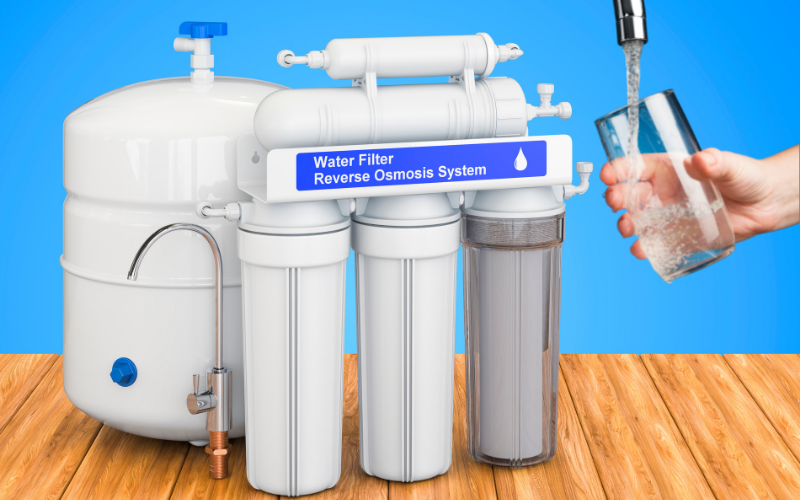
Another benefit of having an RO system is that it also softens your water and lowers your PH level making the aquarium water even safer and more comfortable for your fish friends.
Water conditioners do not have this capability so if you live in an area with notoriously hard water an RO system might be the best solution to ensure the quality of your tap water is up to snuff.
But it’s important to note that reverse osmosis strips all the minerals from your water and your aquarium may or may not require those minerals. so you might want to consider adding the equilibrium into the mix.
Does Letting Tap Water sit, make it safe for fish?
Yes, Chlorine typically gasses off from aquarium water in 24 hours, But in some cases, there can be chloramine which is a more stable compound made of both chlorine and ammonia.
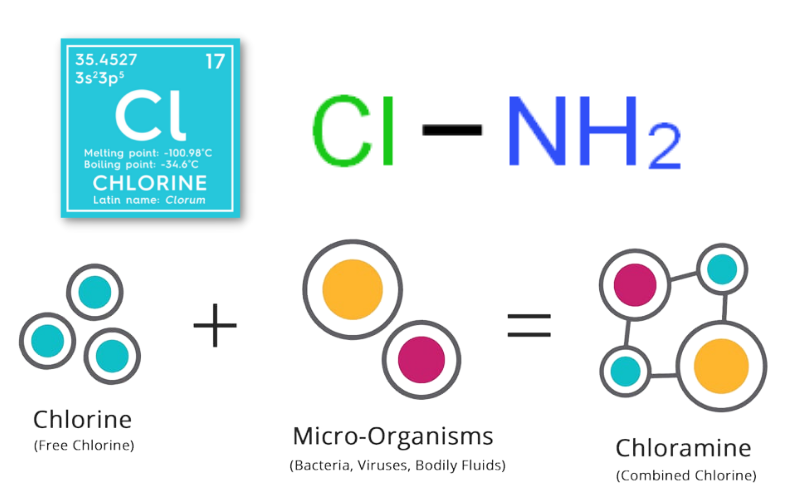
chloramine doesn’t gasses out easily as chlorine does. It does require a de-chlorinator in order to be activated. So if you are sure that your tap water doesn’t contain chloramine, you can simply keep your tank for 24 hours to remove Chlorine by gassing it off.
How long does it take to dissipate chlorine for fish?
Chlorine typically gasses off from aquarium water in 24 hours.
So if you are sure that your tap water only contains Chlorine and doesn’t contain chloramine, you can simply keep your fish tank for 24 hours to remove Chlorine by gassing it off.
But if you are not sure, whether there is chloramine too, it’s better to use a propper Dechlorinator.
How to Identify the Chlorine Poisoning in your Aquarium? (Symptoms of Chlorine Poisoning)
So how to identify chlorine toxicity in fish? What are the basic symptoms of Chlorine poisoning?
We already know that chlorine destroys the fish’s gills and skin. So that the damaged gills will cause the fish to gasp for air at the surface of the water. Also, it develops red areas on fish bodies and gills.

Finally fish start to swim about erratically and ultimately die anywhere from a few minutes to several hours depending on the chlorine concentration.
Also exposing fish to Chlorine for a long term may cause some other diseases like cloudy eyes.
How to Treat the Fish for Chlorine Poisoning?
In the case of Chlorine Poisoning, some fish will die right away and others may take a few days. So to protect these survivors, you want to focus on helping them to rebuild their damaged gills and skin by creating a stress-free environment.
Feed them lots of good food if they’re willing to eat it like frozen bloodworms, live black worms, or baby brine shrimp for nano fish and fresh veggies for herbivores.
Keep the water quality high by doing multiple small water changes as necessary. Also, keep the water well aerated with a gentle flow by using something like an air stone or sponge filter.
Final Word
The main causes of Chlorine Poisoning are unawareness and silly mistakes. Even well-experienced fishkeepers make basic mistakes by forgetting to add de-chlorinators.
In terms of prevention, you can make a checklist for water maintenance and new tank setups if you are forgetful. So let’s make some effort to minimize human errors where possible and keep our loving pets happy and healthy.

